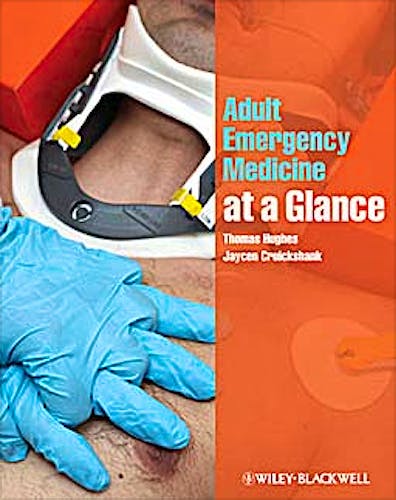

No hay productos en el carrito



Adult Emergency Medicine at a Glance
Hughes, T. — Cruickshank, J. -
1ª Edición Febrero 2011
Inglés
Tapa blanda
120 pags
1000 gr
null x null x null cm
ISBN 9781405189019
Editorial JOHN WILEY & SONS
LIBRO ELECTRÓNICO
-5%
30,15 €28,64 €IVA incluido
28,99 €27,54 €IVA no incluido
Acceso On Line
Inmediato
Description
Following the familiar, easy-to-use at a Glance format, and in full-colour,
this brand new title provides an accessible introduction and revision aid for
medical students and junior doctors. Reflecting the increased profile of Emergency
Medicine in clinical practice and the medical school curriculum, Adult Emergency
Medicine at a Glance provides a user-friendly overview of the key subjects that
will enable any student or junior doctor to ‘hit the ground running’
when they enter one of the most exciting areas of clinical medicine.
Adult Emergency Medicine at a Glance is:
- A concise, visually orientated course in emergency medicine that is perfect for both study and revision
- Organised around symptoms: ‘Short of Breath’, rather than diagnoses: ‘Pneumonia’
- Focused on the most common or dangerous conditions you will see in the Emergency Department and includes the latest cardiac resuscitation guidelines
- Comprehensively illustrated throughout with over 47 full-page colour illustrations
Table of Contents
Preface and acknowledgements.
List of abbreviations.
1 Life in the Emergency Department.
2 Diagnosis.
3 Shock and intravenous fluids.
4 Imaging in the Emergency Department.
5 Analgesia.
6 Airway management and sedation.
7 Blood gas analysis.
8 Trauma: primary survey.
9 Trauma: secondary survey.
10 Major head and neck injury.
11 Minor head and neck injury.
12 Wounds.
13 Burns.
14 Hand injuries.
15 Wrist and forearm injuries.
16 Shoulder and elbow injuries.
17 Back pain, hip and knee injuries.
18 Tibia, ankle and foot injuries.
19 Abdominal pain.
20 Urology problems.
21 Ear, nose, throat and dental problems.
22 Eye problems.
23 Obstetrics and gynaecology problems.
24 Toxicology: general principles.
25 Toxicology: specifi c poisons.
26 Psychiatry: self-harm and capacity.
27 Psychiatry: the disturbed patient.
28 Observational medicine.
29 Loss of function and independence.
30 Syncope, collapse and falls.
31 Slow heart rate.
32 Fast heart rate.
33 Cardiac arrest.
34 Chest pain: cardiovascular.
35 Chest pain: non-cardiovascular.
36 Shortness of breath.
37 Anaphylaxis.
38 Sepsis.
39 Endocrine emergencies.
40 Gastroenterology.
41 Headache.
42 Stroke and transient ischaemic attack.
43 Seizures.
44 Hypothermia and hyperthermia.
45 Pre-hospital medicine.
46 Major incident.
47 Chemical, biological, radiation, nuclear and explosive incidents.
Case studies: questions.
Case studies: answers.
Index.
Author Information
Thomas Hughes is Consultant Emergency Physician, John Radcliffe
Hospital, Oxford, and Honorary Senior Lecturer in Emergency Medicine, University
of Oxford
Jaycen Cruickshank is Director of Emergency Medicine, Ballarat
Health Services, and Senior Lecturer in Emergency Medicine, University of Melbourne,
Victoria, Australia
© 2025 Axón Librería S.L.
2.149.0